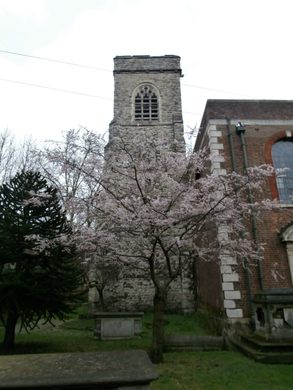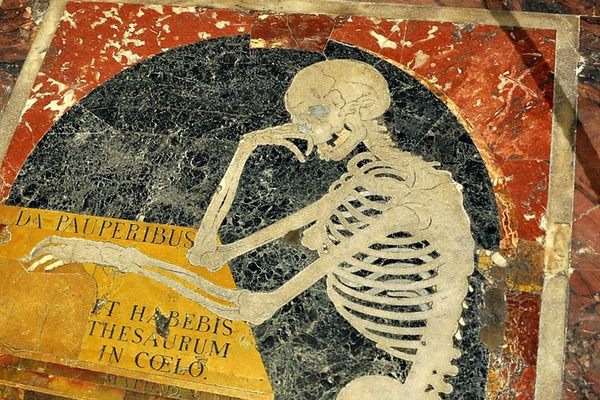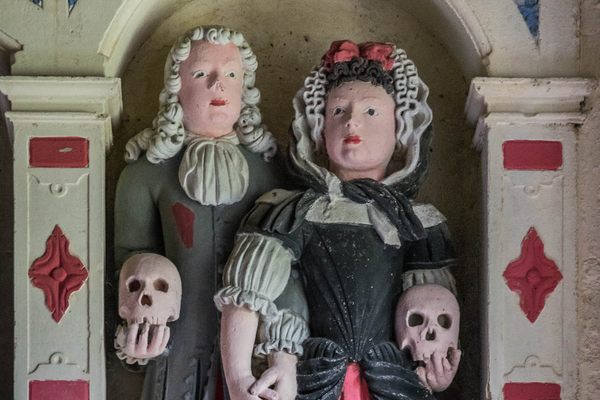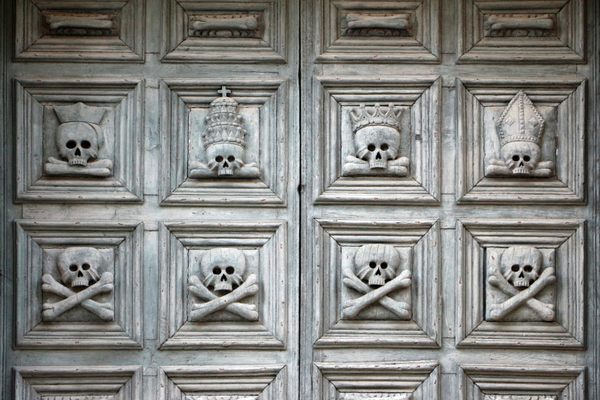St. Nicholas Church Memento Mori
These morbid carvings remind churchgoers of the inevitability of death.
As London churches go, St. Nicholas Church in Deptford is fairly typical. Founded in the 12th century, its tower dates from the 14th century, while the rest is largely 17th century with additional reconstruction work from after the Blitz. But though the church itself may seem ordinary, the churchyard holds intriguing treasures.
Atop the two gateposts of the main entrance sit skull and crossbones carvings, years of weathering only adding to their already somewhat gruesome appearance. They were never intended to be frightening—they’re memento mori, there to remind churchgoers of the inevitability of death and prompt people to reflect on the transient nature of earthly possessions and pursuits.
The carvings also have associations to the church’s charnel house, still standing though no longer in use. At one point, there were more burials than could fit into the ground, so the cleaned bones of the dead were piled up inside to wait for the resurrection.
A persistent rumor is that these memento mori were the inspiration for the classic piratical flag, the Jolly Roger. Sadly, this seems very unlikely to be true.
At the rear of the churchyard lies another type of memorial, that of playwright Christopher Marlowe, who is buried in an unmarked grave nearby. Marlowe is best remembered for Doctor Faustus, and he may have lived to become a playwright to rival Shakespeare, had he not been murdered in 1593 at the age of just 29. The official account was that Marlowe was killed in a dispute over a bill with one Ingram Frizer, but the likelihood is that the truth is much more complex.
Marlowe was known to be engaged in spying activities, and 10 days before his death, a warrant was issued for his arrest, ostensibly on a charge of heresy. Marlowe willingly handed himself in and was granted bail. On the day of his death, he spent time in a house with Frizer and two other men, all of whom had been in the employ of Elizabethan spymasters, so it seems much more likely that Marlowe was assassinated, particularly as his murderer was soon granted a pardon.



































Follow us on Twitter to get the latest on the world's hidden wonders.
Like us on Facebook to get the latest on the world's hidden wonders.
Follow us on Twitter Like us on Facebook